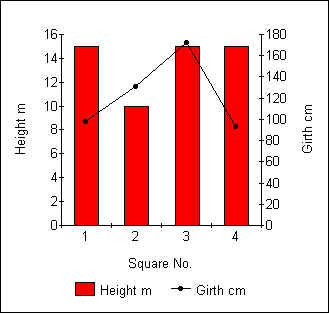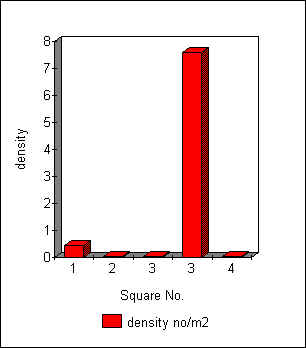| Oak trees on the project site were fairly
well-developed in comparison to other tree species. Their height was constant over the
area, apart from in the area of square 2 where the oak was apparently substantially
shorter than elsewhere (Fig.6). This may be due to competition with the dense rhododendron
in this area. However, it must be kept in mind that the tree heights in squares 1 and 2
were estimated, with an accuracy of +/- 2m. Also the measurements across the site are
based on a very small number of individuals. There may actually be no real difference
between heights.
|

Figure
6. Oak height and girth |


